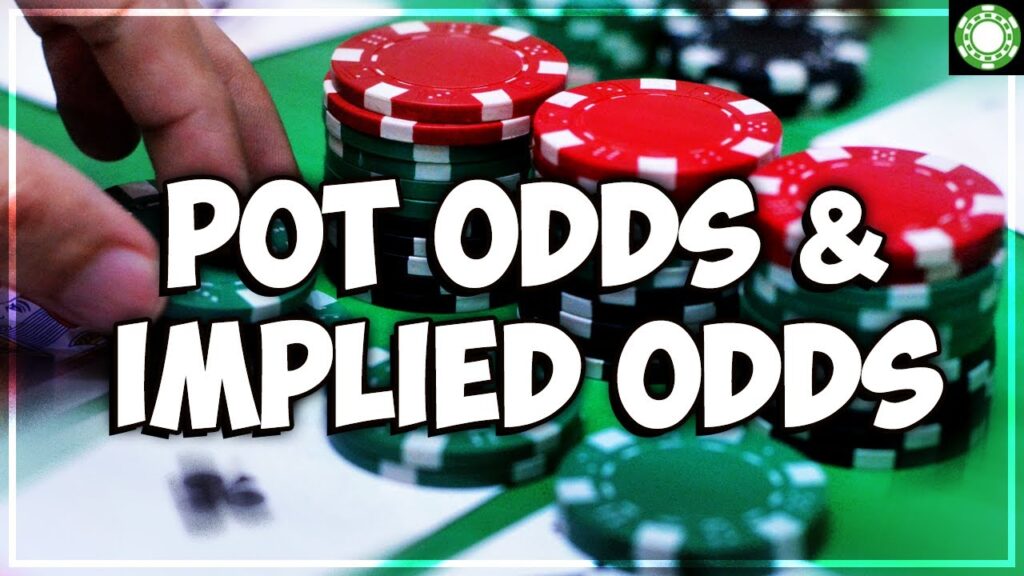Pot odds are the odds equal the ratio of the pot size to the size of the bet youmust call. To determine the pot odds, simply take the amount of money thatis already in the pot and divide that by how much you need to put in to call.Understand the pot odds helps you to determine whether or not you shouldcall when you are on a draw. Let’s say you are in middle position, and the flop brings a Q, J,10 board. There is $30 in the pot, your opponent bets $10 and you are holding pocket Queen’s. There is $30 in the pot, your opponent bets $10 again, and now you are $5 in the pot. Should you call?

The answer is yes to both questions. There is a $30 pot, and your opponent bets $10. That leaves $20 for you to call. You are holding pocket Queen’s, and there are $60 unseen cards that can hurt you. Pot Odds say that you should call. You have a 1 in 4 chance of hitting your hand, so you are an 80% favorite. And $60 is a lot of money, even in the beginning of the tournament. If you call, you will more than likely lose all of your chips to your opponent.
$30 is not much to bet when your opponent bets $10, and that is well within the statistical average. You need to protect your hand, and potentialantly win all of the money in the pot. Because your opponent is highly aggressive, you could very well lose all of your chips to them if you call their $10 bets. You need to know what kinds of hands will benefit you while calling, so you have to play mind games with your opponent. If you are new to poker, you probably need to spend some time figuring out what gives you the best advantage to call, or folding, and the best way to do this is to memorize the starting handanks for each position: big blind, middle blind, and small blind.
What are your pot odds?
Once you learn the starting handanks, you need to know which cards will make a particular hand favorable or unfavorable. This will take some practice, since the cards change with each hand, but you will be able to recognize the power of the cards once you understand the statistics. Let’s say you have two red 7’s in your hand. What are your pot odds? There are 13 unseen cards besides yours that can help you, so minus the two you hold. You have about a 30% chance of making a flush, and if you draw one, you have about a 15% chance of hitting a bigger straight. But your hand is only mediocre; it could easily be beaten by a higher straight or a higher flush. You need to be able to spot potential danger, so you need to know the proper way to play all your hands.
Playing all your hands correctly requires a great deal of discipline. You need to know what position you are in, and what advantages or disadvantages your hand has compared to others. Discipline is also important in tournaments, since you need to be able to avoid playing terrible hands while in the blinds, and in the small blinds, since other players are acting before you and will act before you in subsequent hands.
All of the factors you need to consider in Texas Holdem added up together can make the decision making much easier, which is why it is a good idea to practice a lot if you are new to the game.